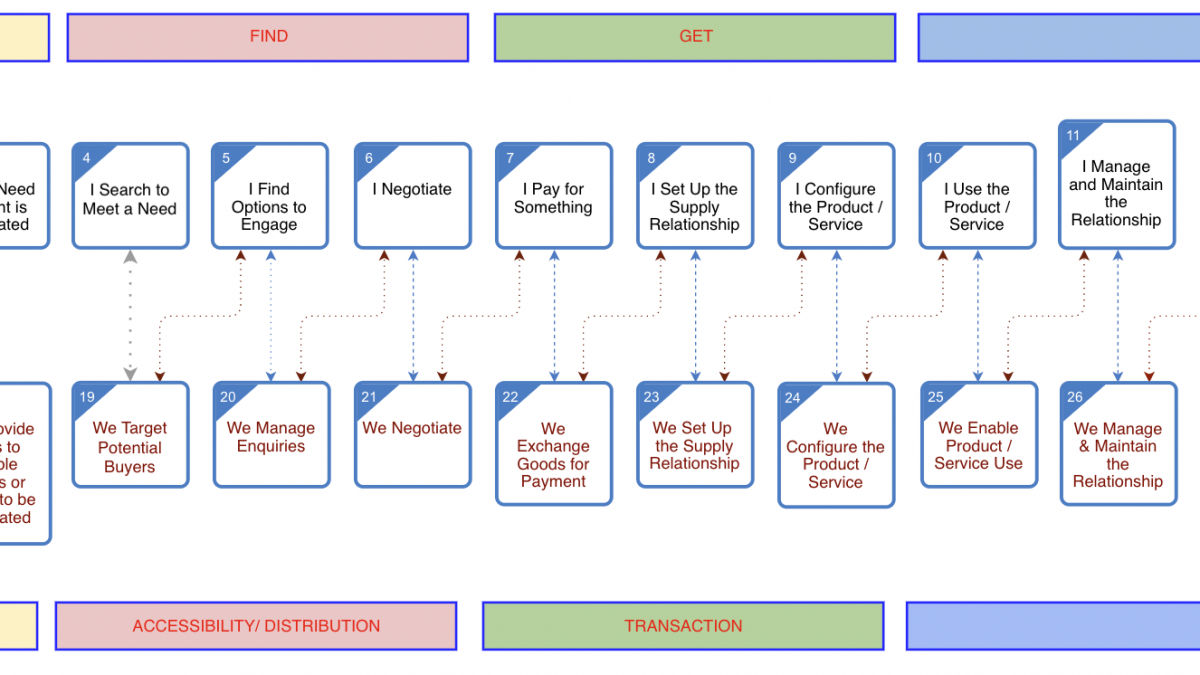Customer – Supplier Engagement Framework for the 20’s

In writing up this post, mainly for use in a presentation later today, i’ve just noticed that it’s been ten years since I last wrote about this framework. Time flies, but the fundamentals of this model seem to remain the same; albeit i’ve now updated the model a bit with the better visual/ process tools we now have available. So let’s dive in….
What we are saying is 1) there are a series of steps that an individual goes through around the sourcing, use and ultimately finishing a relationship with a product or service. (For these purposes we are assuming a relationship where at the product/ service is significant or complex enough to merit such consideration; although the same principles apply, more lightly where the product/ service is less complex or significant). The top level steps are as below.

Then 2) there are a similar/ inverse set of steps being taken in parallel by the organisations seeking to provide or having provided this product or service to the individual.

Then the two come together as below. One would like to think that convergence would all happen very smoothly; but we know that is not the case.

The high level issues that prevent the above processes all running smoothly are:
- In the early phases there are nearly always multiple parties competing to win the individuals business; so the individual has both structural (commercial) and trust-based reasons why the individual has to hold back from the full disclosure that efficiency would require.
- Both parties, but mainly the organisation, often engage intermediaries to ‘help’ in specific bits of the processes; that inevitably introduces another layer of friction and more places for data to have to move to.
- In the later (ownership) phases the organisation has ‘efficiency’ (i.e. cost reduction) reasons to move away from processes that would maximise efficiency for both parties towards ones that minimise cost for them.
One way through that in-efficiency that we are working on now is ‘Intentcasting’; that is to say individual equivalents of the formal and reasonably-efficient ‘Requests for Information’ (RFI), Requests for Proposals (RFP), Requests for Quotes (RFQ) that have existed in B2B markets for many years. It may be that individuals also need Requests for Offers (RFO); but more on that in a follow-up post.
Intentcasting will likely require extension of the Customer-Supplier Engagement Framework as below.

